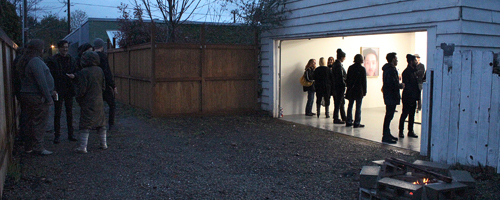The Orpheus tale is a classic. Orpheus’s bride, Eurydice, dies on their wedding day and takes up residency in the underworld. In her absence, Orpheus, chief among musicians and poets, creates the saddest music in the world. His songs of woe so disrupt man and Gods alike that Orpheus is encouraged to enter the underworld and retrieve his bride. In the underworld, Eurydice is offered to him with one provision: as he leads her from the underworld, Orpheus cannot look back. Of course, he turns and Eurydice dies permanently.
The dead should be seen, not heard
The Orpheus tale is a classic.
Orpheus’s bride, Eurydice, dies on their wedding day and takes up residency in the underworld. In her absence, Orpheus, chief among musicians and poets, creates the saddest music in the world. His songs of woe so disrupt man and Gods alike that Orpheus is encouraged to enter the underworld and retrieve his bride. In the underworld, Eurydice is offered to him with one provision: as he leads her from the underworld, Orpheus cannot look back. Of course, he turns and Eurydice dies permanently.
Serving as inspiration for early visual arts, films, music, novels, theater, cartoons, operas, comics and more, the story of Orpheus and his love has a message for audiences that centuries of artists have been compelled to transmit.
It is obviously a timeless and important message.
Playwright Sarah Ruhl joins this litany of messengers with her re-telling of the Orpheus myth from the perspective of Eurydice. She elaborates upon the myth’s climax. There is the simple literal message of Orpheus: don’t look back. Elaborating upon this theme, Ruhl gives Eurydice her own temptation to gaze behind.
Lured away from her wedding and to her death by the promise of a letter from her dead father, Eurydice arrives in the underworld and finds him waiting for her. Ruhl strives to create a “cultural ritual” to organize her feelings by blending classical mythology and her own father’s death from bone cancer when she was 20.
She succeeds in creating a glorious anomaly. Her play is the first telling of the Orpheus myth from Eurydice’s perspective. Additionally, Ruhl tackles death with invention, whimsy and honesty.
From the absurdist induction of a chorus of stones to moments of dance, song, poetry and projected film, Eurydice embraces the core elements of the theater and then pushes them forward. Artists Repertory Theatre gains momentum from that push and rockets forward with an infectious energy that fills their small space.
As the audience finds their seats and settles in, the cast takes its turn to establish a seaside carnival atmosphere. Elizabeth Houghton, who has no lines in her role as a trouper, steals this and many other moments; her performance as a little girl is flawless. These character vignettes orient the audience and it is into this beachside scene that Orpheus (Gilberto Martin Del Campo) and Eurydice (Jennifer Le Blanc) first enter.
Jennifer Le Blanc inhabits the quiet moments of the play with grace and purpose. As Eurydice re-establishes her relationship with her father, Le Blanc moves with honesty and intent. Her body facilitates emotion occasionally absent from her voice. And, as such, the connection between father and daughter evokes more than the pair of lovers. The audience finds sympathy for father and daughter. As a group we will see Eurydice back to the underworld, which was perhaps the intention.
David Boden, as Father, is a charming parent. As he attempts to remind a disoriented Eurydice of their relationship, he assumes the role of a porter and creates a room for her made entirely of string. The actors are silent during this and the audience watches as a father’s love for his returned child bears physical manifestation. Together, they find their way to each other using stories about the father’s childhood.
When Orpheus finds his way to the underworld, Eurydice must choose between her string room full of the past and an uncertain future with her husband. Literally, Orpheus destroys that chance by looking behind. But, Eurydice has not only looked back, but taken up residence. And though her residence is obtuse, the message is logical. Inspired by the work of cartoonist and artist Winsor McCay, Lewis Carroll and Edwardian-era “Playland At The Beach”, Eurydice has its roots deep in the soil of whimsy. Yet, the color palette for the play runs more to the actual colors of soil than the metaphorical.
The utilitarian set, whose functionality makes up for any wanting in form, serves as a blank, white canvas upon which the action is drawn. The turn-of-the-century inspired garments run the gamut from dark brown to cream. In between, we have oatmeal.
Excessive earth tones aside, the Artists Repertory Theatre succeeds in staging a complicated play in an accessible, moving fashion. The challenge of Ruhl’s abstract world is realized in a moving performance. The mix of whimsy and honesty, classical references and progressive elements, dance, staging, puppetry, film and theatricality point to the future of theater arts. Artists Repertory Theatre certainly isn’t looking back.
Thank goodness.
EurydiceArtist’s Repertory TheatreSept. 16 through Oct. 2Tuesday – Sunday evenings at 7:30 p.m.Wednesday matinee at 11 a.m.Sunday matinee at 2 p.m.Tickets range from $20-$47




